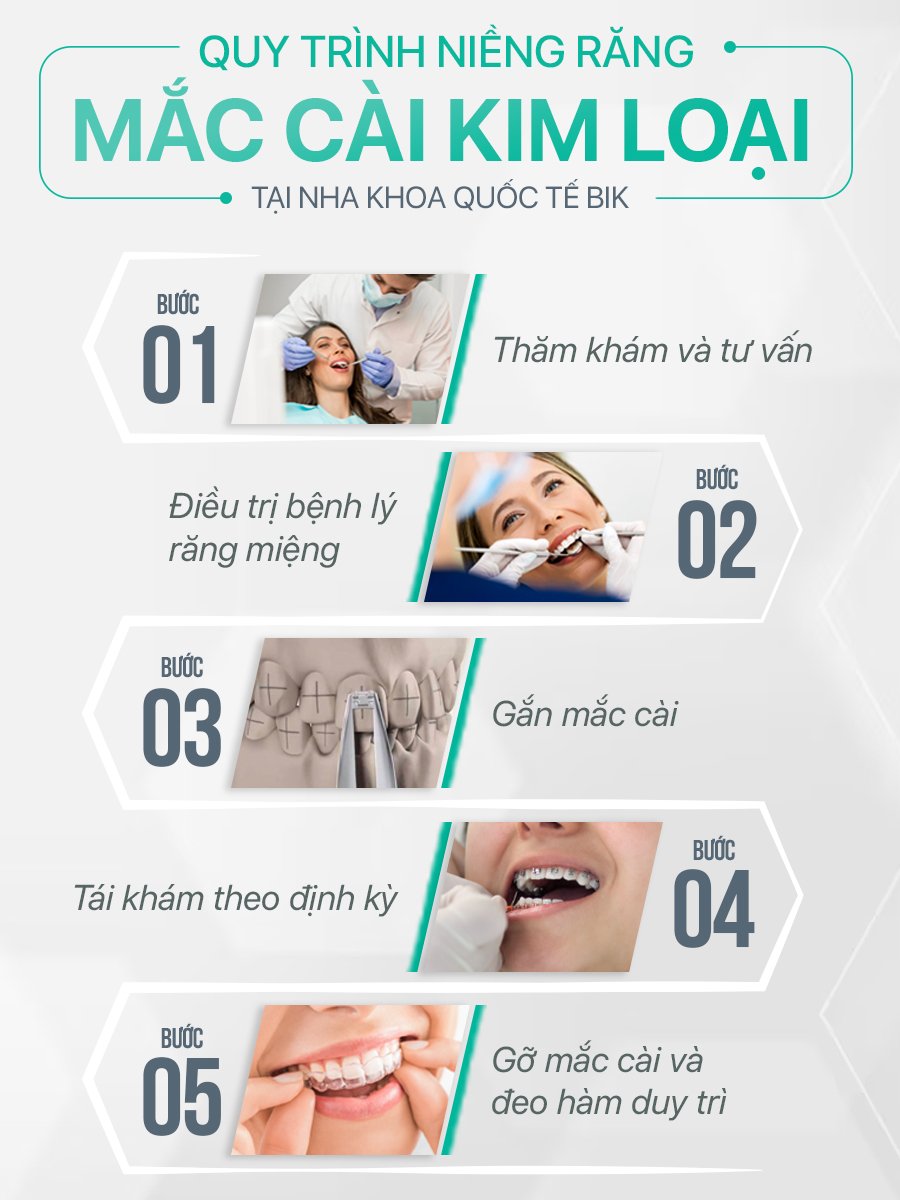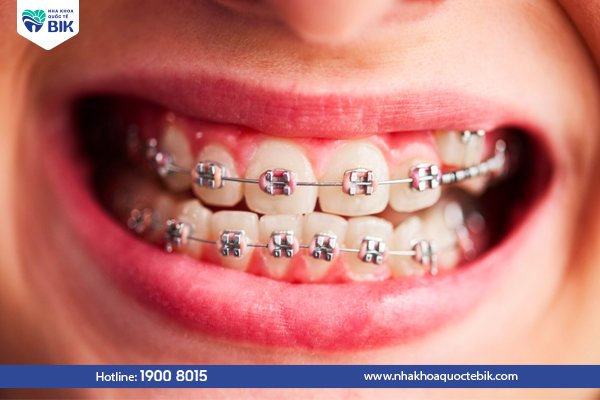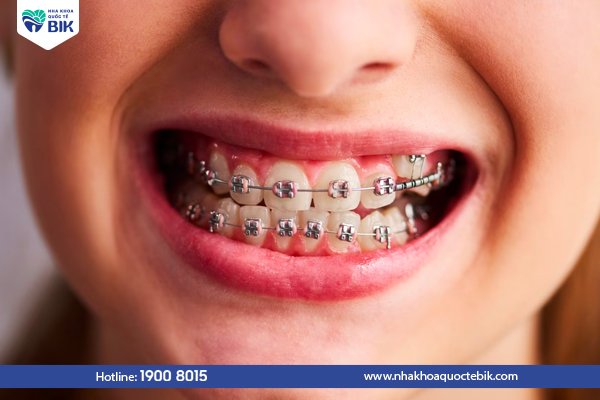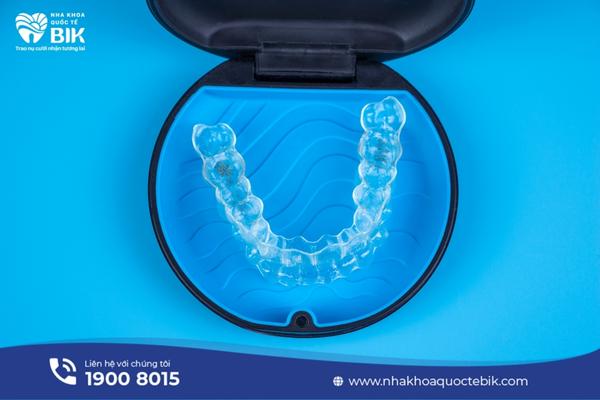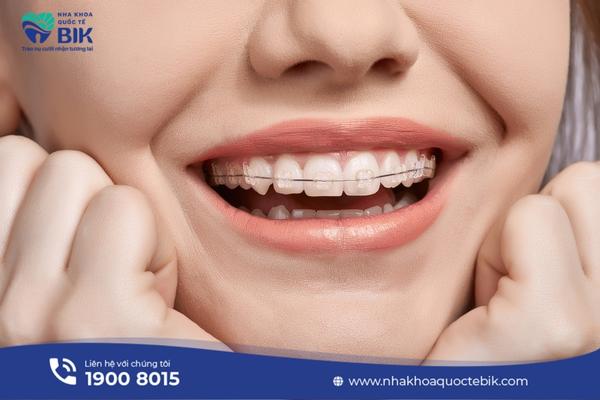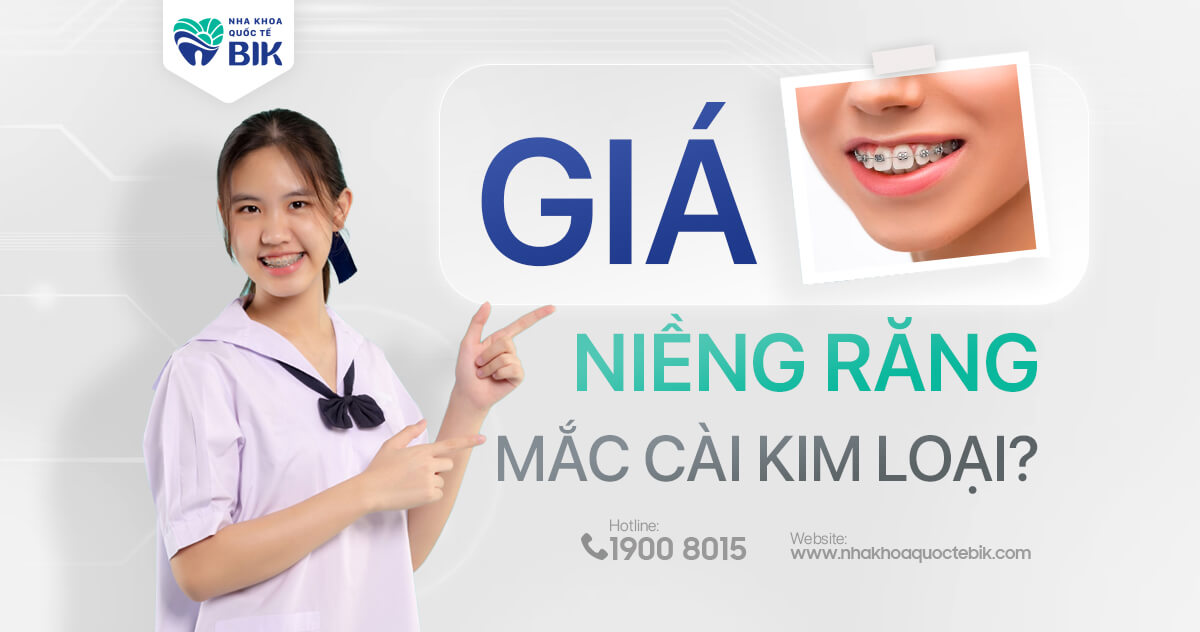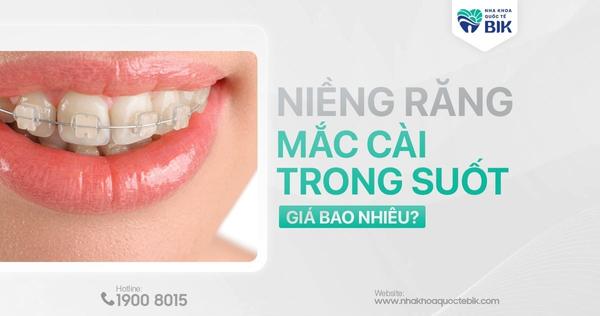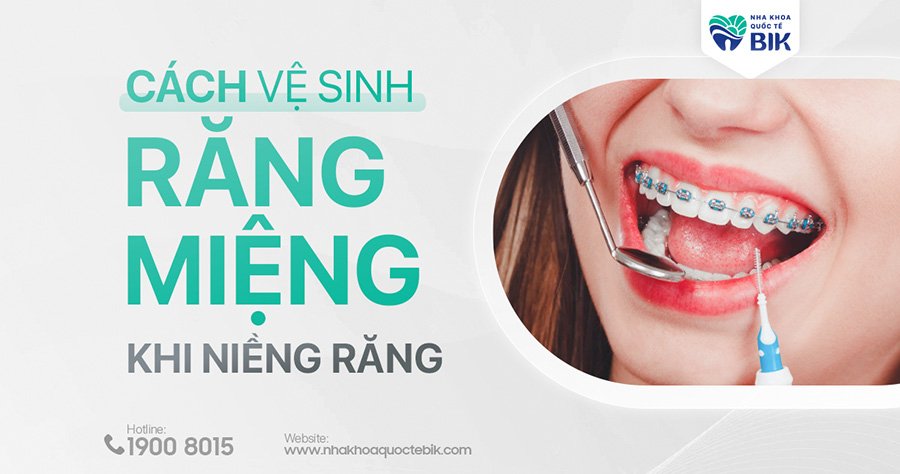
Metal braces are a fairly simple and popular orthodontic method, this service is provided by most dental facilities nationwide. Each dental clinic will usually have a different specific process but must follow the basic 6-step international standard sequence. This helps ensure the highest orthodontic efficiency, while not affecting the overall health of the customer. Let’s learn about the metal braces process with BIK International Dental Clinic in this article!
1. Metal braces methods
Metal braces have been around for a long time and are divided into the following types:
1.1. Conventional metal braces (traditional)
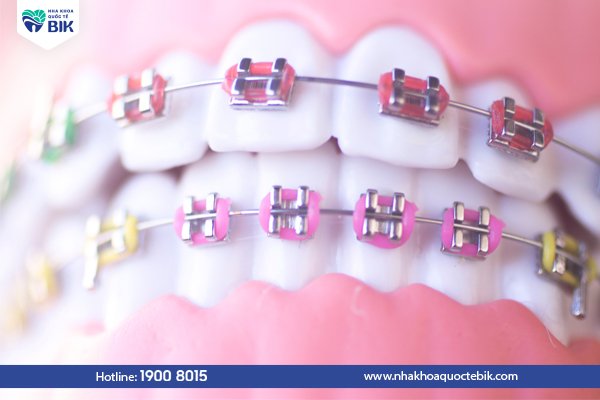
Traditional metal braces use elastic bands to secure the brackets and archwires. This is also the main part that creates the tightening force to help the teeth move to the desired position on the jaw. This type of braces is affordable, so many people choose it when they need cosmetic orthodontics.
1.2. Self-locking metal braces (self-ligating)

It has the same operating mechanism as conventional metal braces (traditional), which is to create a tightening force to move the teeth. The difference is that this method uses an automatic lock integrated on the braces to fix the archwire without the need for elastic bands. Thanks to that, the tightening force on the teeth is continuous and stable, and customers do not need to go to the dentist to adjust the force regularly.
1.3. Lingual metal braces
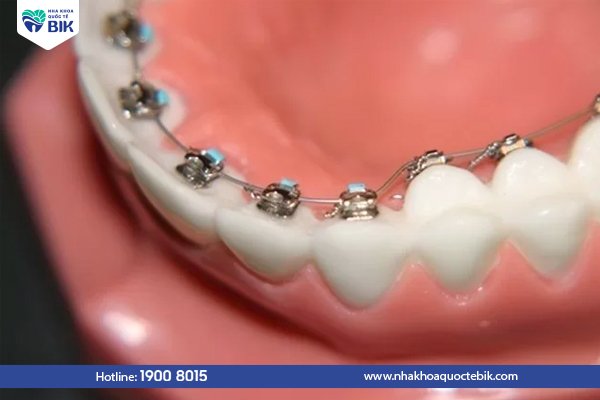
It has the same structure as the traditional method, however, the orthodontic appliance of the lingual braces method will be attached opposite the tongue, the inside of the teeth, instead of the outside. Thanks to this braces placement, customers can be more comfortable and confident in daily communication because they are no longer afraid of revealing the braces.
2. Metal braces procedure at BIK international dental clinic
The metal braces procedure must be ensured to take place in the correct order, according to international standards to ensure safety and bring the highest orthodontic efficiency.
2.1. Examination and consultation
This is also known as the pre-orthodontic stage, at which time the doctor will conduct a general examination of your oral health as well as take X-rays and CT scans to check the specific condition of your teeth misalignment.
From the collected data, the doctor can make an accurate diagnosis and advise specific information about orthodontic methods suitable for your needs.
2.2. Treatment of oral diseases
A healthy set of teeth is a necessary condition when starting braces. Therefore, some oral diseases (if any) such as tooth decay, pulpitis, gingivitis, … will be thoroughly treated by the doctor before starting the orthodontic process. If the above diseases are not treated, the braces process will become difficult and can cause tooth damage.
2.3. Attaching braces
For braces, customers need to wear braces that are suitable for their specific teeth condition. In cases where the jaw is narrow, the doctor may prescribe jaw expansion or jaw expansion to prepare for the next step.
2.4. Attaching braces
Braces will be fixed to the tooth surface, outside or inside depending on which method the customer chooses. The archwire located on the bracket groove has the effect of creating a tightening force to correct the position of the teeth to the desired position.
2.5. Regular check-ups
To ensure the best orthodontic results, customers should have check-ups according to the doctor’s appointment schedule throughout the braces wearing process. Normally, customers need to come back for a check-up once a month so that the doctor can adjust the tightening force as well as check the progress of tooth movement.
2.6. Removing braces and wearing retainers
After the teeth have returned to their correct position, the bite is balanced and the customer is satisfied with the results, the doctor will remove the braces. However, to maintain this result after braces, the customer needs to wear a retainer according to the doctor’s instructions.
Depending on each specific case, the time to wear the retainer will be different. About 6 months after braces, customers need to wear the retainer continuously for about 20-22 hours a day except for oral hygiene and eating. For people with weak teeth, the time to wear the retainer will be longer, possibly permanently.
3. How long does it take to wear metal braces?
How long it takes to wear metal braces actually depends on many factors. Among them are: the complexity of the teeth that need braces, the condition of oral health, the age of the braces, etc. Therefore, depending on the specific case, the time to wear braces can last for several months or several years.
Normally, the time for braces for adults with average teeth condition will last about 6 months to 1.5 years. In case of severe misalignment and malocclusion, the time for metal braces can last up to 2 or 3 years. In addition, if braces are performed at the age of 12-16 when the jawbone is not completely hardened, the orthodontic treatment will certainly be shortened a lot.
In addition, if the customer chooses a dental facility with poor reputation, the doctor will diagnose and prescribe the wrong treatment plan, which will also prolong the time for braces. This not only wastes time, affects the effectiveness of braces, but also causes many other costs if the teeth become more and more misaligned due to incorrect braces.
4. Do metal braces hurt?
In fact, braces are an orthodontic method that uses tightening force to pull teeth into the correct position. Whether a lot or a little, when teeth are subjected to such a force, it will definitely lead to pain and discomfort. This is normal and the pain will subside after only a few days when the oral cavity gets used to the orthodontic appliance. If necessary, the doctor will prescribe and instruct the patient to take painkillers to help them feel more comfortable in the beginning. Please note that you should never use painkillers or antibiotics without a doctor’s prescription to avoid unwanted side effects.
In addition, because they are made of hard metal with a non-smooth surface, in the first few days, the archwire and brackets can easily injure the cheeks, tongue, and lips if the patient is not careful. In this case, the patient will be instructed to use orthodontic wax to minimize friction.
5. Some notes when wearing metal braces
When deciding to choose metal braces, customers should note some specific things according to each stage as follows:
5.1. Before wearing braces
It is necessary to clearly determine the condition of your teeth to choose the most suitable braces method. Metal braces are often used to treat buck teeth, underbites, misaligned teeth, etc. at all levels from simple to complex. Check if you are allergic to metal to ensure safety when wearing braces. If you are easily irritated by metal, you should consider choosing ceramic braces or Invisalign clear braces instead.
To ensure orthodontic effectiveness, customers need to choose a dental clinic specializing in braces, fully equipped with modern machinery and technology and a team of highly qualified doctors.
5.2. While wearing braces
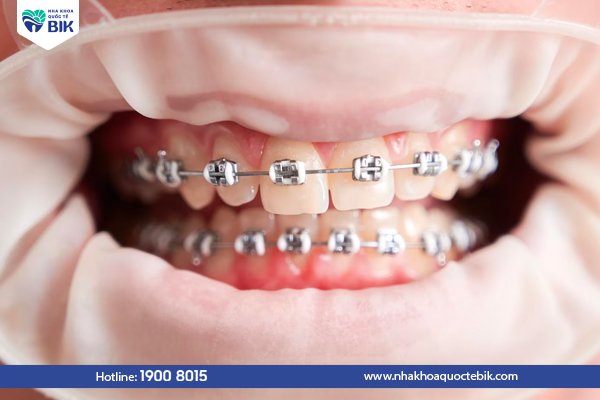
While wearing braces, customers need to pay attention to careful dental care:
5.2.1. Oral hygiene
When wearing metal braces, customers need to pay more attention to daily oral hygiene. The reason is that plaque or food debris can easily accumulate in the braces, and over time will become plaque that causes bad breath and tooth decay. For more effective oral hygiene, customers can combine the use of dental floss, interdental brushes and mouthwash every day.
5.2.2. Diet
When wearing braces, customers should limit the use of tough, chewy, sticky foods, … because they can cause the braces to come loose. Instead, use soft, well-cooked foods, supplemented with fiber, vitamins, … to both limit the force when chewing and protect overall health.
5.3. After removing braces
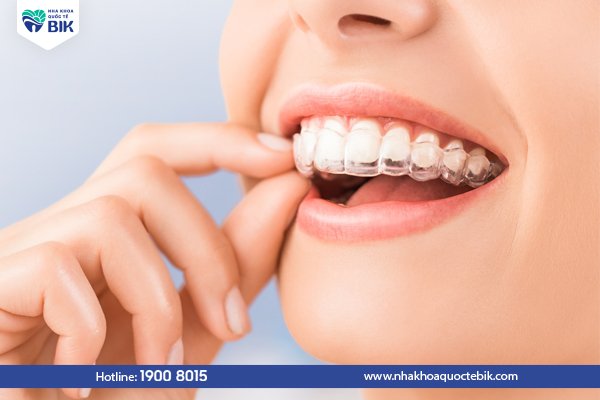
When you have beautiful, even teeth with a standard bite, eating and oral hygiene will become much easier. At this time, customers can comfortably eat the foods they love and ensure oral hygiene at least twice a day to ensure the oral cavity is always clean.
In addition, after removing braces, customers need to wear a retainer to maintain the effectiveness of braces according to the doctor’s instructions.
So, the process of conventional metal braces will include 6 steps performed in accordance with international standards. This process, if performed strictly, can ensure the safety of the customer’s oral health, while providing the best orthodontic results as desired.

